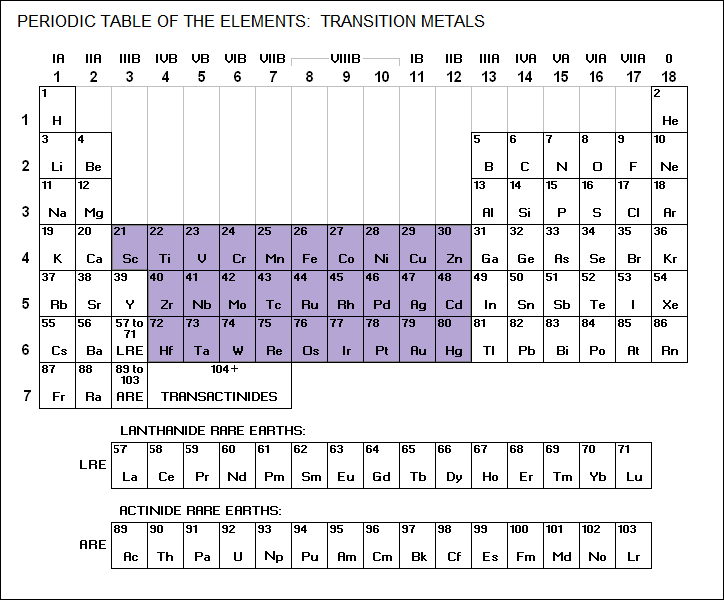
* Tungsten is a member of the transition metals family:

____________________________________________________________________
TUNGSTEN / W / 74
A lustrous, silvery, dense, highly unreactive metal. It was once
called "wolfram", which is why its chemical symbol is W. There
are five isotopes found in nature:
W<184/74> / 31%
W<186/74> / 29%
W<182/74> / 26%
W<183/74> / 14%
W<180/74> / 0.1%
All are stable.
atomic weight: 183.84
abundance: 74th
density: 19.3 gm/cc
melting point: 3,410 C
boiling point: 5,600 C
valence: 2 3 4 5 <6>
____________________________________________________________________
Tungsten is a fairly useful element, with production in the tens of thousands of tonnes a year. The pure metal is actually fairly soft, but tungsten usually contains traces of carbon and oxygen, which makes it much harder. Tungsten by itself is used at present for incandescent light bulb filaments, since it is heat-resistant and does not evaporate away; however, the inefficient incandescent bulb is clearly on the way to extinction and the market for tungsten in lighting is certain to dry up very soon. It is used as an alloying element in hard tungsten steels, and is in particular heavily used in the form of tungsten carbide (WC) or "cermet (ceramic metal)", which is employed in cutting tools. It is also used for electrical contacts -- and more quietly used in armor-piercing ammunition, notably for big darts used to destroy tanks.
The name "wolfram" means "wolf dirt" in German, and was given to the metal by German tin miners who found that its presence interfered with the smelting of tin, almost as if the tin was being eaten up by the strange dirt.
